Abstract
When the ruminal bacterium prevotella ruminicola B(1)4-M was grown in a defined medium with an excess of glucose (3.6 mM ammonia and 50 mM glucose), the cells accumulated large amounts of cellular polysaccharide and the viable cell number decreased at least 1,000-fold. This decrease in viability was correlated with an accumulation of methylglyoxal in the supernatant (3 to 4 mM). Other genetically distinct strains of P. ruminicola produced methylglyoxal, but methylglyoxal production was not ubiquitous among the strains. When P. ruminicola B(1)4-M was grown in continuous culture (dilution rate, 0.1 h-1) with an excess of glucose, there was an oscillating pattern of growth and cell death which was correlated with the accumulation and washout of methylglyoxal from the culture vessel. Mutants which resisted an excess of glucose took up glucose at a slower rate and produced less methylglyoxal than the wild type. These mutants were, however, not stable. There was always a long lag time, and the mutants could only be maintained with a daily transfer schedule. When the mutants were transferred less frequently, methylglyoxal eventually accumulated and the cultures died. The mutants transported glucose at a threefold-slower rate than the wild type, and in each case the carrier had more than one binding site for glucose. Because glucose transport could not be driven by phosphoenolpyruvate or ATP, the glucose carrier of P. ruminicola is probably a proton symport system. When P. ruminicola B(1)4-M cultures were treated with 4 mM methylglyoxal, the delta psi decreased even though intracellular ATP concentrations were high.(ABSTRACT TRUNCATED AT 250 WORDS)
Full text
PDF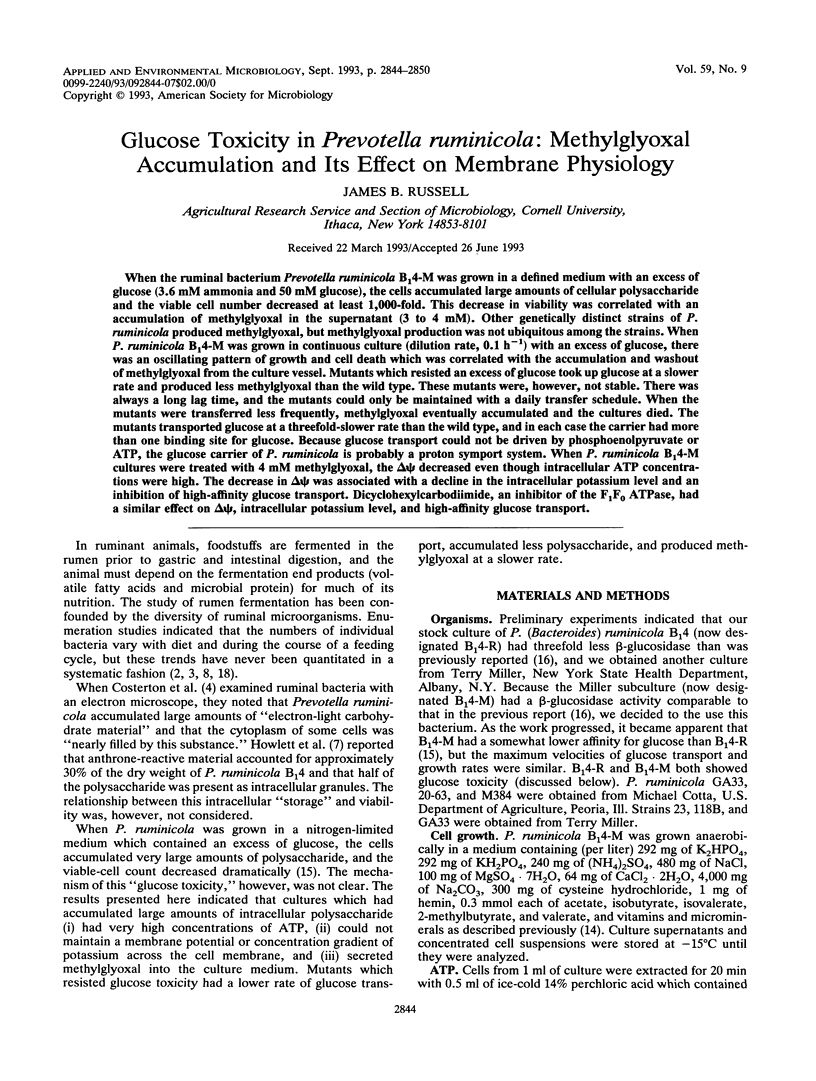
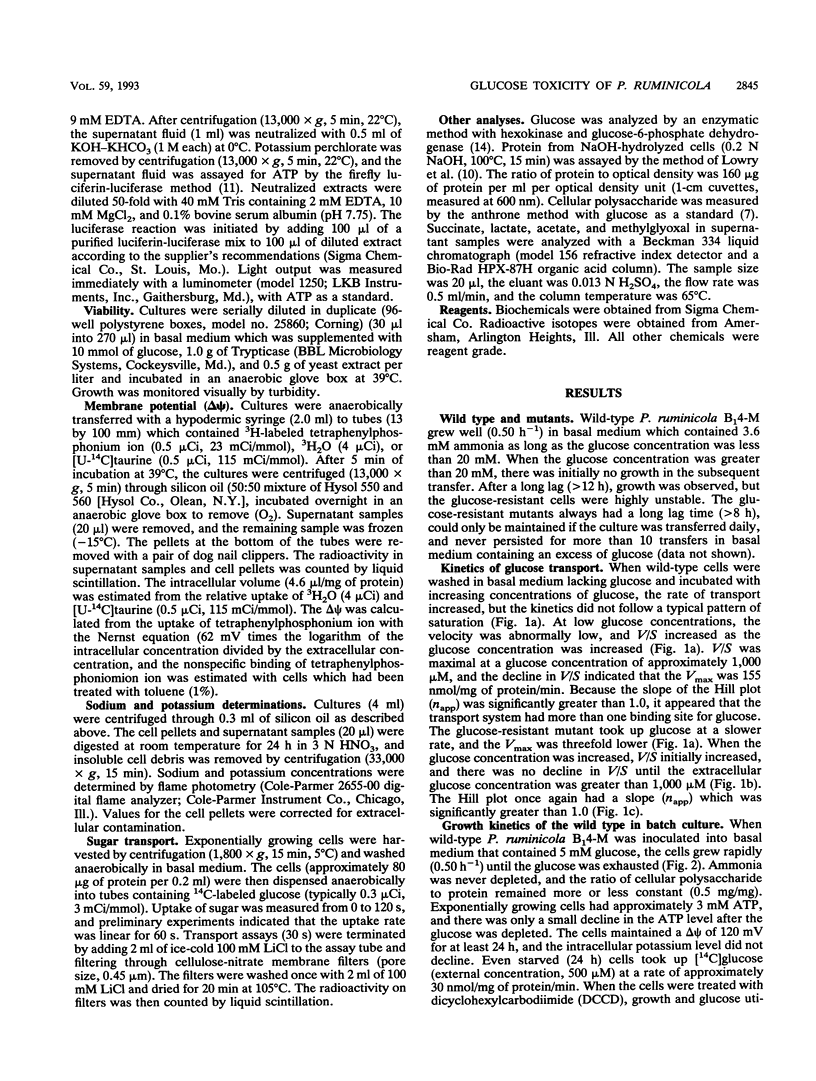
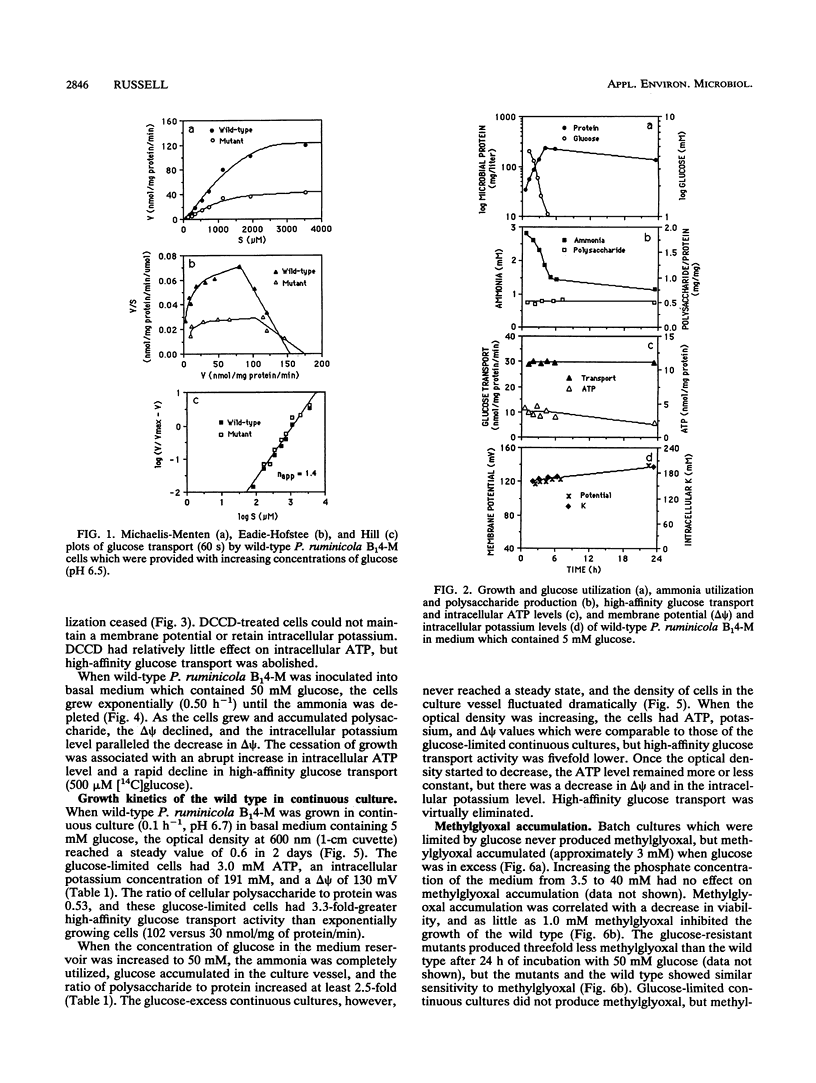
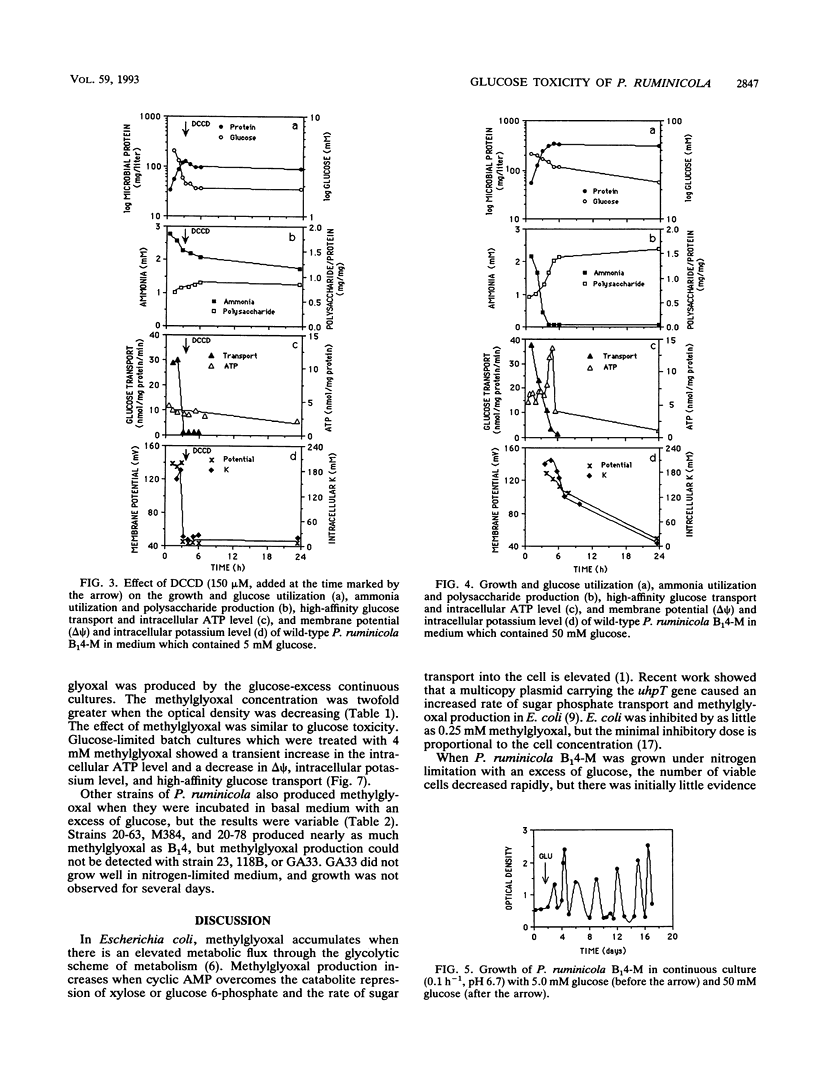
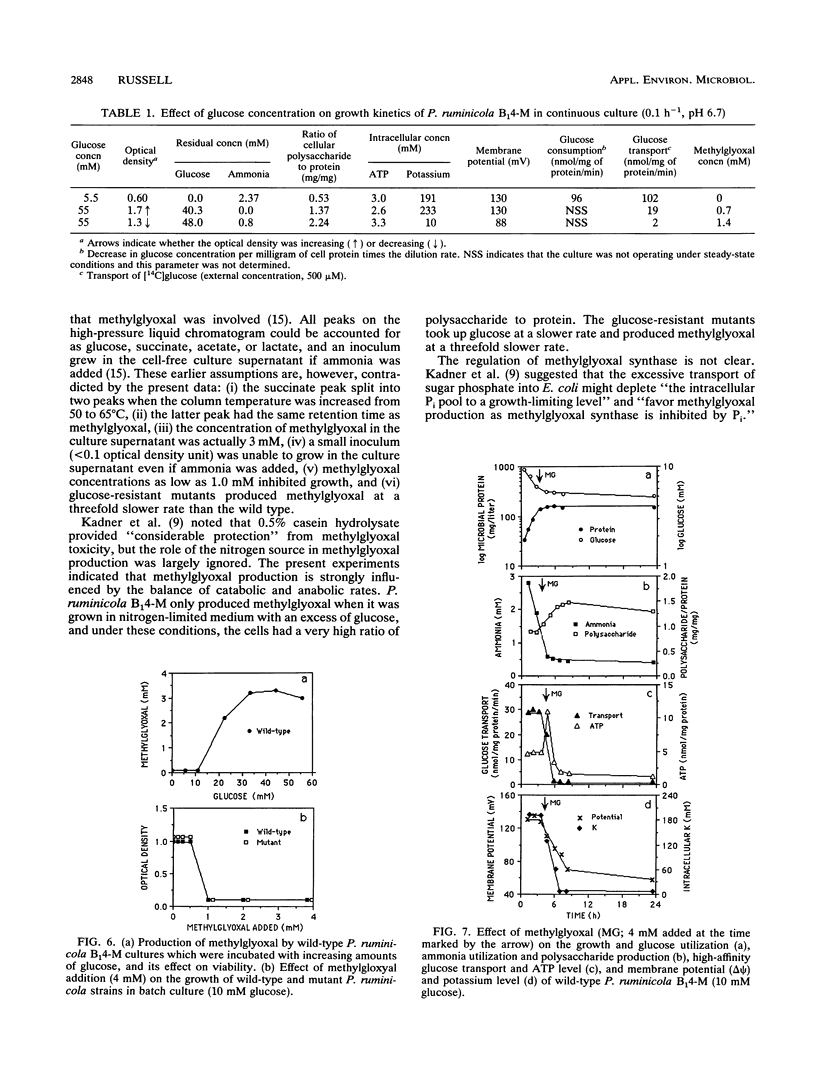
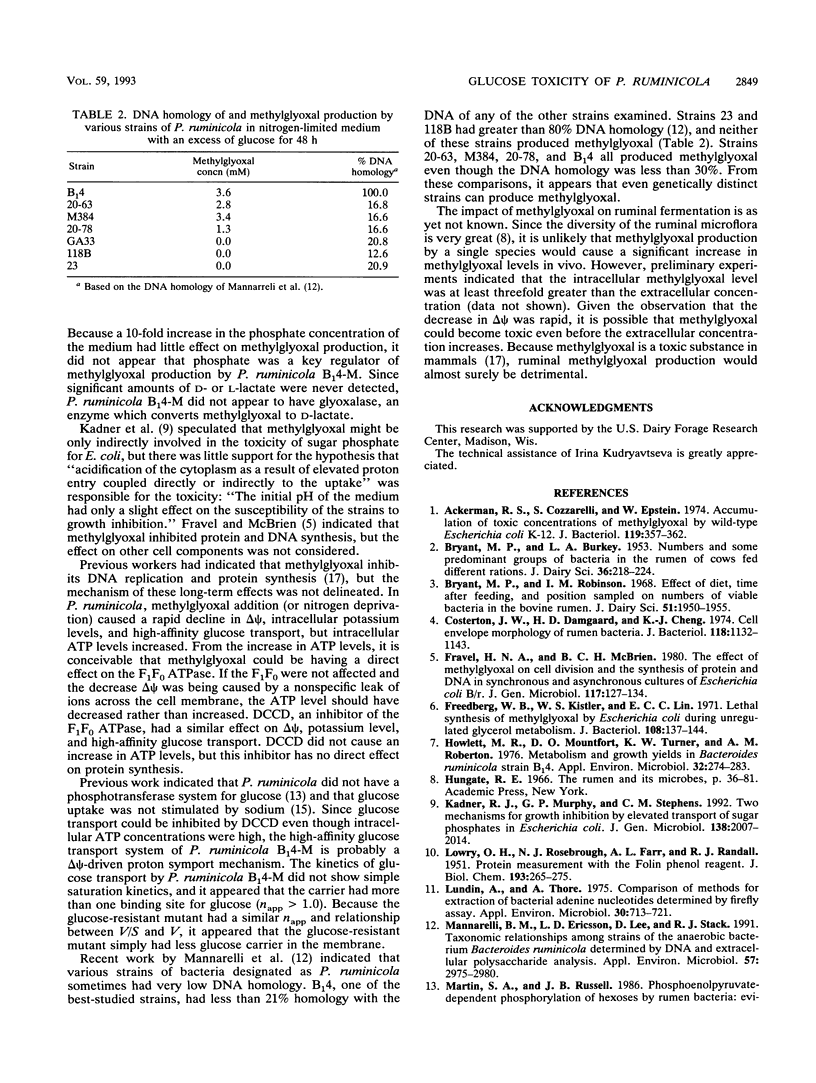
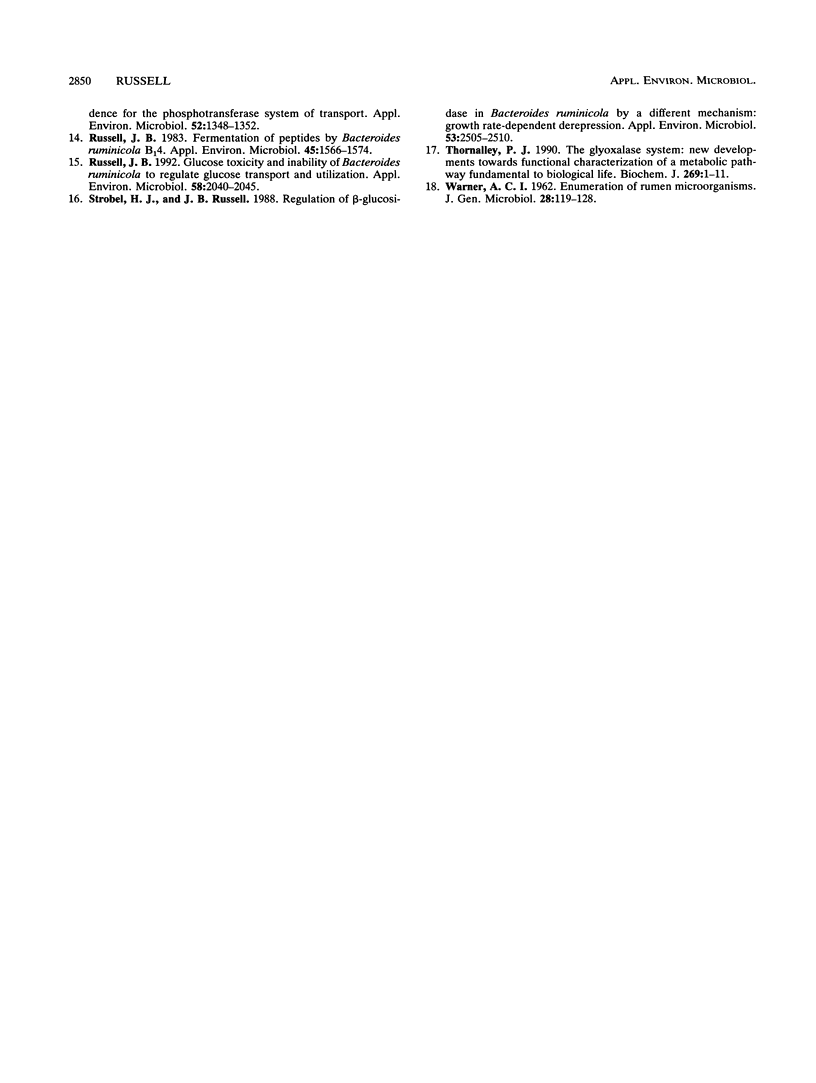
Selected References
These references are in PubMed. This may not be the complete list of references from this article.
- Ackerman R. S., Cozzarelli N. R., Epstein W. Accumulation of toxic concentrations of methylglyoxal by wild-type Escherichia coli K-12. J Bacteriol. 1974 Aug;119(2):357–362. doi: 10.1128/jb.119.2.357-362.1974. [DOI] [PMC free article] [PubMed] [Google Scholar]
- Bryant M. P., Robinson I. M. Effects of diet, time after feeding, and position sampled on numbers of viable bacteria in the bovine rumen. J Dairy Sci. 1968 Dec;51(12):1950–1955. doi: 10.3168/jds.S0022-0302(68)87320-5. [DOI] [PubMed] [Google Scholar]
- Costerton J. W., Damgaard H. N., Cheng K. J. Cell envelope morphology of rumen bacteria. J Bacteriol. 1974 Jun;118(3):1132–1143. doi: 10.1128/jb.118.3.1132-1143.1974. [DOI] [PMC free article] [PubMed] [Google Scholar]
- Fraval H. N., McBrien D. C. The effect of methyl glyoxal on cell division and the synthesis of protein and DNA in synchronous and asynchronous cultures of Escherichia coli B/r. J Gen Microbiol. 1980 Mar;117(1):127–134. doi: 10.1099/00221287-117-1-127. [DOI] [PubMed] [Google Scholar]
- Freedberg W. B., Kistler W. S., Lin E. C. Lethal synthesis of methylglyoxal by Escherichia coli during unregulated glycerol metabolism. J Bacteriol. 1971 Oct;108(1):137–144. doi: 10.1128/jb.108.1.137-144.1971. [DOI] [PMC free article] [PubMed] [Google Scholar]
- Howlett M. R., Mountfort D. O., Turner K. W., Roberton A. M. Metabolism and growth yields in Bacteroides ruminicola strain b14. Appl Environ Microbiol. 1976 Aug;32(2):274–283. doi: 10.1128/aem.32.2.274-283.1976. [DOI] [PMC free article] [PubMed] [Google Scholar]
- Kadner R. J., Murphy G. P., Stephens C. M. Two mechanisms for growth inhibition by elevated transport of sugar phosphates in Escherichia coli. J Gen Microbiol. 1992 Oct;138(10):2007–2014. doi: 10.1099/00221287-138-10-2007. [DOI] [PubMed] [Google Scholar]
- LOWRY O. H., ROSEBROUGH N. J., FARR A. L., RANDALL R. J. Protein measurement with the Folin phenol reagent. J Biol Chem. 1951 Nov;193(1):265–275. [PubMed] [Google Scholar]
- Lundin A., Thore A. Comparison of methods for extraction of bacterial adenine nucleotides determined by firefly assay. Appl Microbiol. 1975 Nov;30(5):713–721. doi: 10.1128/am.30.5.713-721.1975. [DOI] [PMC free article] [PubMed] [Google Scholar]
- Mannarelli B. M., Ericsson L. D., Lee D., Stack R. J. Taxonomic relationships among strains of the anaerobic bacterium Bacteroides ruminicola determined by DNA and extracellular polysaccharide analysis. Appl Environ Microbiol. 1991 Oct;57(10):2975–2980. doi: 10.1128/aem.57.10.2975-2980.1991. [DOI] [PMC free article] [PubMed] [Google Scholar]
- Russell J. B. Fermentation of Peptides by Bacteroides ruminicola B(1)4. Appl Environ Microbiol. 1983 May;45(5):1566–1574. doi: 10.1128/aem.45.5.1566-1574.1983. [DOI] [PMC free article] [PubMed] [Google Scholar]
- Russell J. B. Glucose toxicity and inability of Bacteroides ruminicola to regulate glucose transport and utilization. Appl Environ Microbiol. 1992 Jun;58(6):2040–2045. doi: 10.1128/aem.58.6.2040-2045.1992. [DOI] [PMC free article] [PubMed] [Google Scholar]
- Strobel H. J., Russell J. B. Regulation of beta-glucosidase in Bacteroides ruminicola by a different mechanism: growth rate-dependent derepression. Appl Environ Microbiol. 1987 Oct;53(10):2505–2510. doi: 10.1128/aem.53.10.2505-2510.1987. [DOI] [PMC free article] [PubMed] [Google Scholar]
- Thornalley P. J. The glyoxalase system: new developments towards functional characterization of a metabolic pathway fundamental to biological life. Biochem J. 1990 Jul 1;269(1):1–11. doi: 10.1042/bj2690001. [DOI] [PMC free article] [PubMed] [Google Scholar]
- WARNER A. C. Enumeration of rumen micro-organisms. J Gen Microbiol. 1962 Apr;28:119–128. doi: 10.1099/00221287-28-1-119. [DOI] [PubMed] [Google Scholar]


